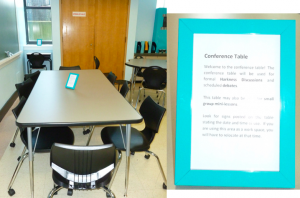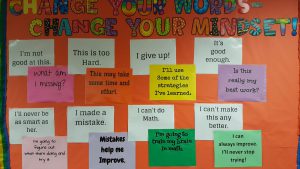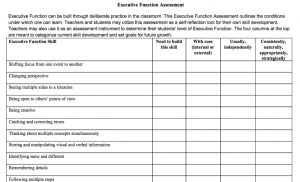In the Learner-Active, Technology-Infused Classroom students take charge of their own learning, guided by a masterful teacher who puts a bridge in place to ensure their success. That first week or two of school is your opportunity to prime your students for success in your classroom. The Priming Plan is the key to a powerful and rewarding school year.
There are three things you should accomplish in your Priming Plan:
- Have students build familiarity with all of the structures you will use to put them in charge of their own learning.
- Build in them a sense that they can succeed at high levels.
- Gather some assessment data regarding both academics and social interaction to use to make decisions.
Structures
Your classroom is outfitted with a resource table, help board, peer expert board, and other structures to support learning. Students will use rubrics to drive their learning, activity lists to access rich and diverse opportunities to learn what’s on the rubric, and folders to organize their work and communicate with you. They will sign up for small-group mini-lessons and limited resources. They will negotiate with their peers to set times for group work, pairs work, and individual work, and note that on a schedule they’ll create to guide their actions. Your classroom will be set up with various areas, and maybe even flexible seating options, so that students will have a place to work quietly, join a small-group mini-lesson, have a discussion, work collaboratively, and more. Find a creative way to engage students in learning all of this. Consider a scavenger hunt with areas set up with how-to sheets or videos made by you or past students. Create an adventure where they have to find the clues to solve a mystery. Write a book or story about your room where students fill in parts related to how they work as they explore the classroom. Start with an easy rubric and activity list to help them through the early days. (For more on the structures of the Learner-Active, Technology-Infused Classroom, read Students Taking Charge: K-5 or 6-12.)

Students’ Belief in Themselves
John Bargh conducted research in which he had college students walk down a hallway to a testing room, unscramble words into sentences, and walk out of the room and back down the hallway. Students who unscrambled words that related to old age, such as shuffleboard, bingo, Florida, and retirement, were primed with old age; they left the room walking more slowly than their peers who unscrambled words that did not prime them for old age. Malcolm Gladwell shares powerful stories from research about priming students in Chapter 2 of his book Blink: The Power of Thinking Without Thinking, referencing the phenomenon of “priming” — using auditory, visual, or tactile cues to nonconsciously shape behavior and thought. The words you use, whatever hangs on your walls, and the way you arrange your classroom all send messages to your students. How will you prime them for success? Have them pick out favorite quotes? Fill your room with gritty phrases? Have them write about the things they are good at? Consider using a Great Student Rubric (primary, elementary, secondary) rather than hanging a list or rules with which they must comply. Spend time priming students to feel good about themselves and their prospects for the year.

Assessment Data
Your curriculum has prerequisites that you assume students have learned in prior grades. Find out! Offer short quizzes and activities to determine how prepared your students are for your curricular goals. Capture data on students’ learning habits and executive function skills. Rather than engaging a group of students for the entire Priming Plan, as you would in an Authentic Learning Unit (ALU), have students engage with one another through a variety of pairings and groupings. Get a sense of the students who work well together and whose styles complement one another. This will help you set your home groups for the first ALU.
While you may not dive into curricular content as quickly as you might otherwise, the time you spend ensuring the students understand how to use all of the structures of the Learner-Active, Technology-Infused Classroom and building a sense of ownership over their learning will leave you well ahead of your prior pacing after a month or two into the school year.
A well-designed Priming Plan will make your year! Here’s a planning guide to help you. Go change the world!
See also “Starting the School Year: Priming Plan vs. First ALU“

